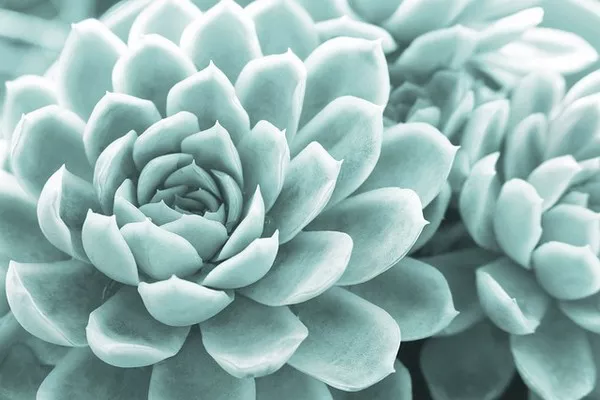Echeveria succulents are beloved for their striking appearance and low-maintenance care requirements. With their rosette-shaped foliage and vibrant colors, these plants have gained immense popularity among both novice and experienced gardeners. While they are known for their ability to thrive in arid conditions, proper watering remains critical for their health and longevity. In this comprehensive guide, we delve into the intricacies of watering echeveria succulents, providing insights on frequency, methods, signs of overwatering, and much more.
Understanding Echeveria Succulents
Before delving into watering practices, it’s essential to understand the natural habitat and characteristics of echeveria succulents. These plants belong to the Crassulaceae family and are native to semi-desert regions in Central America, Mexico, and South America. Echeverias are adapted to arid environments, characterized by infrequent rainfall and well-draining soil. Their thick, fleshy leaves serve as water reservoirs, allowing them to withstand periods of drought.
Frequency of Watering
One of the most common mistakes in caring for echeveria succulents is overwatering. These plants are highly susceptible to root rot if their roots remain consistently moist. Therefore, it’s crucial to adhere to a watering schedule that mimics their natural habitat. In general, echeverias thrive on a “soak and dry” method, where the soil is thoroughly moistened, then allowed to dry out completely before the next watering.
During the growing season, typically from spring to early fall, echeverias require more frequent watering as they actively grow. Depending on factors such as temperature, humidity, and soil composition, this may translate to watering every 7 to 14 days. However, it’s essential to adjust the frequency based on environmental conditions and the moisture level of the soil.
In contrast, during the dormant period in winter, echeverias enter a phase of reduced growth. As a result, they require less water to prevent overhydration. Watering frequency may decrease to once every 3 to 4 weeks during this period. It’s crucial to observe the plant’s behavior and adjust watering accordingly, rather than adhering to a rigid schedule.
Watering Methods
When watering echeveria succulents, the method employed plays a significant role in preventing overwatering and promoting healthy growth. Here are some effective watering techniques to consider:
1. Direct Soil Irrigation: Pour water directly onto the soil surrounding the echeveria, ensuring thorough saturation. Allow excess water to drain freely from the pot’s drainage holes to prevent waterlogging.
2. Bottom Watering: Place the pot in a shallow tray filled with water and allow the soil to absorb moisture from the bottom. This method prevents water from directly contacting the leaves, reducing the risk of fungal diseases.
3. Spray Bottle: For smaller echeveria plants or those in tight spaces, a spray bottle can be used to apply water directly to the soil. Avoid spraying water onto the leaves, as this can lead to rot and fungal issues.
4. Drip Irrigation: Install a drip irrigation system to deliver water directly to the soil at a slow, consistent rate. This method ensures even moisture distribution while minimizing the risk of overwatering.
Regardless of the watering method chosen, it’s crucial to allow the soil to dry out completely between waterings. This prevents moisture buildup around the roots, reducing the risk of rot and fungal diseases.
Signs of Overwatering
Identifying signs of overwatering is vital for preventing damage to echeveria succulents. Some common indicators include:
Yellowing or Translucent Leaves:
Overwatered echeverias may develop yellow or translucent leaves due to excessive moisture uptake. In severe cases, the leaves may become mushy and collapse.
Soft or Blackened Stems:
Excess moisture can lead to stem rot, characterized by soft, blackened stems. This condition compromises the plant’s structural integrity and may result in wilting or collapse.
Mold or Fungus Growth:
Overwatered soil creates a conducive environment for mold and fungal growth. White, fuzzy mold or powdery mildew on the soil surface indicates excessive moisture levels.
Foul Odor:
Rotting roots produce a foul odor reminiscent of decay. If you detect a musty or rotten smell emanating from the soil, it’s likely indicative of overwatering.
If any of these symptoms are observed, immediate action is necessary to prevent further damage to the echeveria plant. Reduce watering frequency, improve soil drainage, and consider repotting the plant if root rot is present.
Factors Influencing Watering Needs
Several factors influence the watering requirements of echeveria succulents, necessitating flexibility in your approach. These factors include:
1. Climate and Season: Echeverias require more frequent watering during hot, dry periods and reduced watering during
cooler, wetter seasons.
2. Sun Exposure: Plants exposed to intense sunlight may require more frequent watering to compensate for increased evaporation rates.
3. Pot Size and Material: Smaller pots dry out more quickly than larger ones, necessitating more frequent watering. Additionally, porous materials such as terracotta allow for better airflow and moisture evaporation.
4. Soil Composition: Well-draining soil is essential for preventing waterlogged conditions. A mix of succulent or cactus soil with perlite or coarse sand promotes optimal drainage and aeration.
By considering these factors and closely monitoring the echeveria plant’s condition, you can tailor your watering regimen to meet its specific needs.
Conclusion
Proper watering is essential for the health and vitality of echeveria succulents. By understanding their natural habitat, adhering to a “soak and dry” watering method, and monitoring environmental factors, you can ensure optimal growth and minimize the risk of overwatering-related issues. Remember to adjust watering frequency based on seasonal changes, plant behavior, and individual characteristics. With the right care, your echeveria succulents will thrive and continue to grace your indoor or outdoor space with their beauty for years to come.


